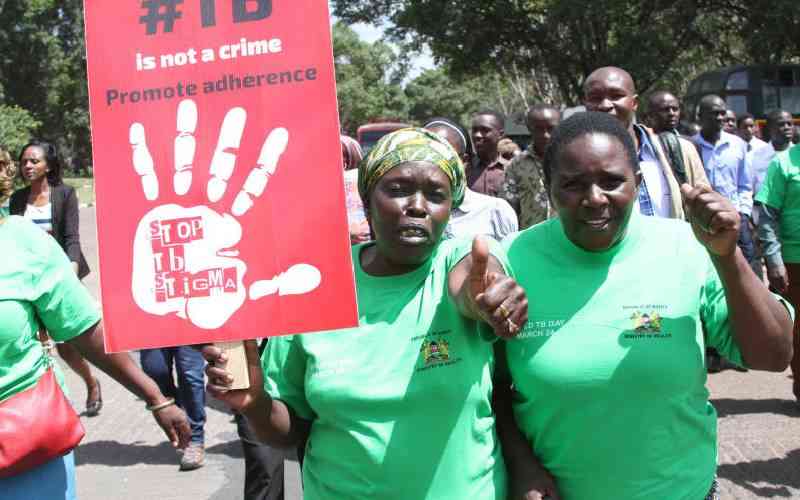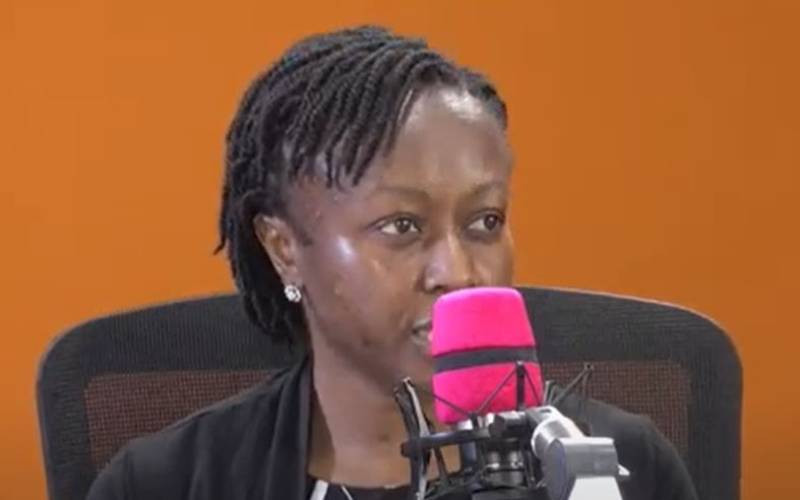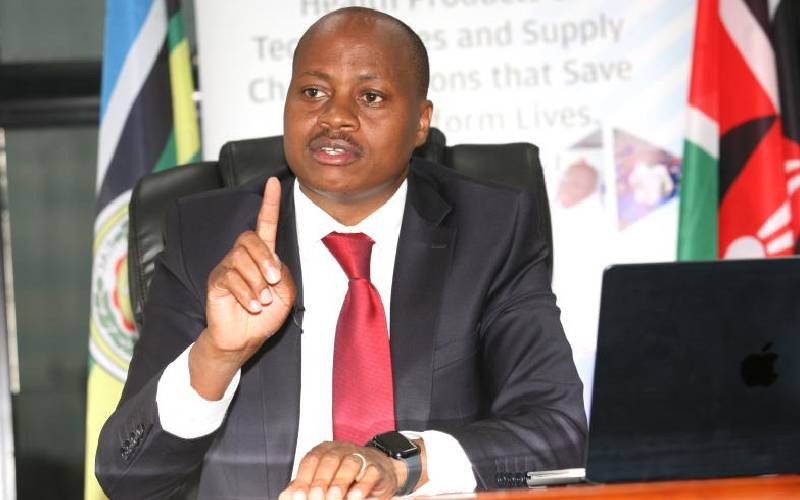
The Kenya Medical Research Institute (Kemri) has dispatched a team of experts to Marsabit to collect samples for tests, following the deaths of nine people.
Two of the deaths were reported at the facility level, whereas nine others were reported at the community level, according to a report by the Department of Health.
Several patients are also admitted across the county in what the health department suspects to be an outbreak of severe malaria.
An insider at Kemri said the team consisting of scientists and surveillance specialists was dispatched to the county on Thursday, May 11.
"Kemri experts were deployed to help analyse the cause of death by collecting samples, and identifying geographical areas affected by the diseases," said the insider.
The Kemri team is working in partnership with World Health Organisation (WHO), and the Department of Health in the vast county.
Though the disease is unknown, Marsabit County Health Executive Grace Galmo Boru said preliminary reports reveal severe malaria because patients are responding well to malaria treatment.
Boru said patients also presented to the hospital with malaria-related symptoms like fever, chills, and severe headache.
- WHO: Liberia, Benin, Sierra Leone roll out malaria vaccine
- Mass mosquito net distribution kicks off in Tana River County
- WHO endorses new malaria vaccine for African infants
- Saving lives of pregnant mothers, one backpack at a time
Keep Reading
The official said collected samples have been sent for laboratory analysis at Kemri in Nairobi.
"Verbal autopsy being done by the team on the ground to establish caseload, and if symptoms of those who have died are linked to what is being suspected," said Boru.
According to health data, a number of admitted patients and those who died were herders who had traveled to Archers and Komu, at the border of Isiolo county, during the dry spell before travelling back to Marsabit.
The deaths were reported in Kargi Ward, Leisamis Sub County.
"The people who died were in a state of emergency. The situation has, however, been contained, with no death reported in the last three days," added Boru.
Monday, May 15, there were at least seven patients admitted with severe malaria.
The hospital's Chief Executive Officer (CEO) Leiban Wako said the facility has reported a surge of severe malaria in the past two months.
There was no case of malaria reported in January, February and March.
However, in April, at least 10 cases were reported, an increase to 13 reported this month.
"Malaria has never been a disease of concern at the hospital. But the flow of malaria patients is on the rise," said Wako.
"We have not been recording any cases of malaria, for example in January, February and March, we never recorded any case of malaria, but in April and this month, we have more cases which seem to be severe," said Wako.
A surge of cases is reported two months after a new mosquito vector- Anopheles Stephansi (An. Stephensi) was discovered in the county.
It is however not clear if the surge is linked to the vector reported to be highly invasive, and resistant to insecticides used, it is more targeted to urban areas.
The species has been expanding its geographic range over the last decade, with detections in Africa first reported in Djibouti (2012), Ethiopia and Sudan (2016), Somalia (2019), Nigeria (2020), and now in Kenya.
In a statement issued over the weekend, Kemri noted that the vector could contribute to more cases and malaria deaths.
However, it is not clear whether there is a link between the vector to the current surge in cases and deaths reported in Marsabit.
"We have asked Kemsa to share their findings, on whether the cases are attributed to the newly discovered vector," said Boru.
According to health experts and data, Marsabit is among the counties reporting more cases.
In an earlier interview with The Standard, Dr Donald Apat, the programme manager for Global Fund Malaria at Amref, said Marsabit and Turkana counties are recording similar cases like those in the Lake Basin regions of Nyanza and Western.
At least one in every 10 patients presenting to hospitals in the counties have malaria.
"In reference to the latest malaria epidemiological stratification, regions within Turkana have reported malaria parasite prevalence rates of more than 10 percent, almost similar to Lake endemic regions like Busia and Siaya," Apat said in an interview.
In Kenya, the disease is endemic in Busia, Bungoma, Siaya, Vihiga, Kisumu, Homa Bay, Baringo and Migori and Kakamega counties.
To contain the spread of the disease and deaths, the Department of Health together with partners are distributing mosquito nets.
Locals are also being sensitised on the presentation of the disease, to enable them to seek care on time.
"Mosquito nets are being dispatched to locals and advised to report to the nearest hospitals," said Boru.
 The Standard Group Plc is a multi-media organization with investments in media platforms spanning newspaper print
operations, television, radio broadcasting, digital and online services. The Standard Group is recognized as a
leading multi-media house in Kenya with a key influence in matters of national and international interest.
The Standard Group Plc is a multi-media organization with investments in media platforms spanning newspaper print
operations, television, radio broadcasting, digital and online services. The Standard Group is recognized as a
leading multi-media house in Kenya with a key influence in matters of national and international interest.











